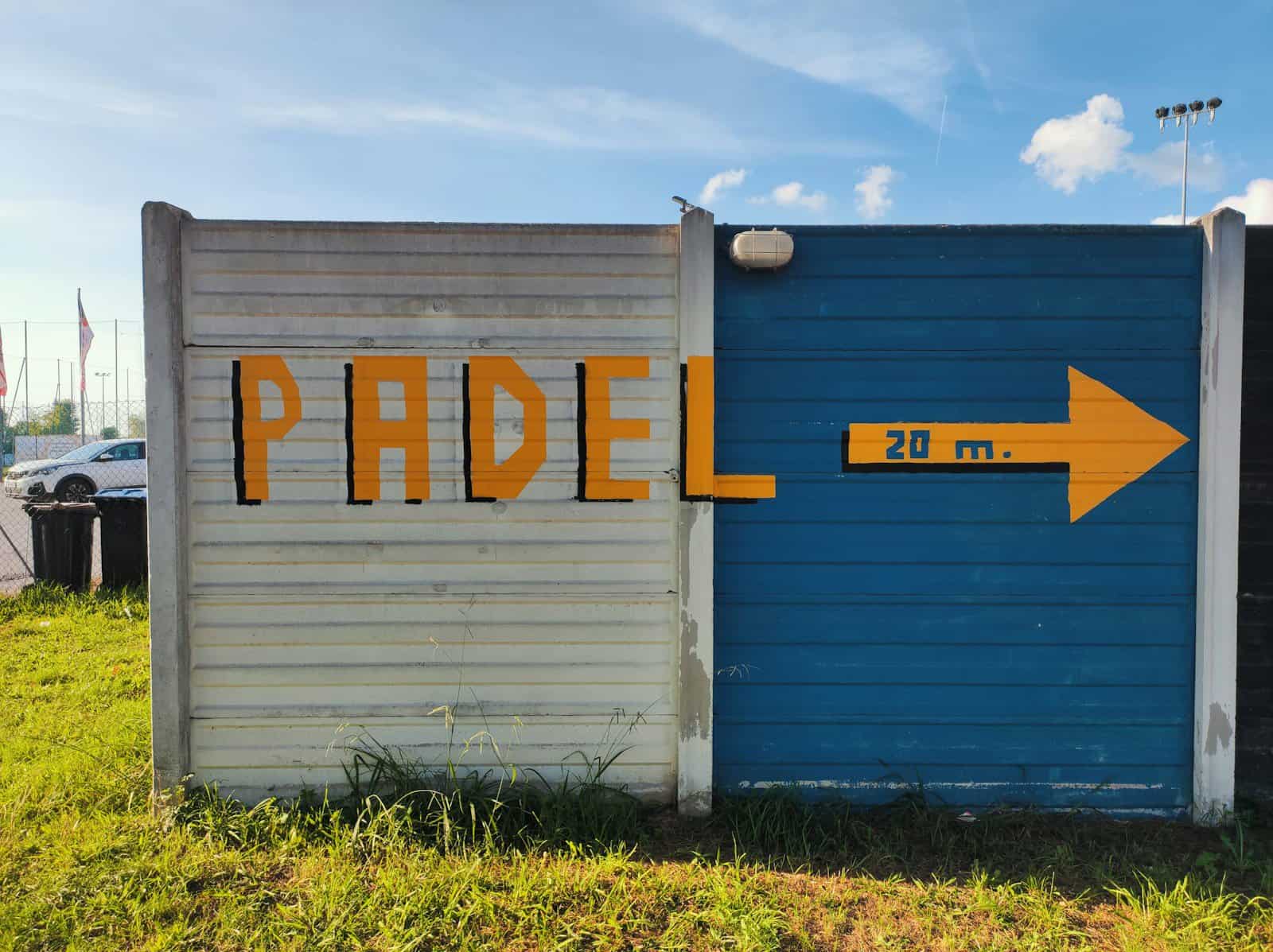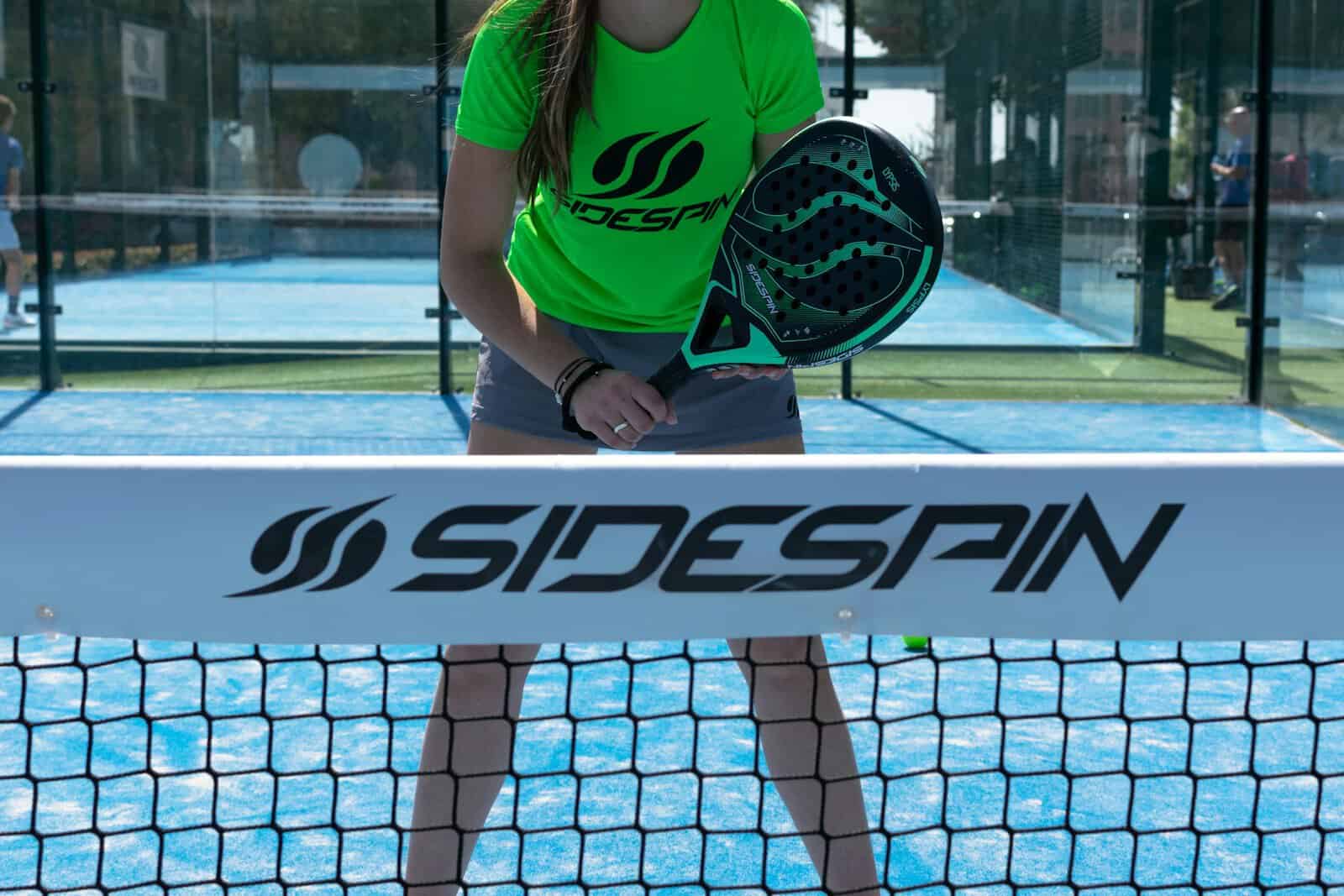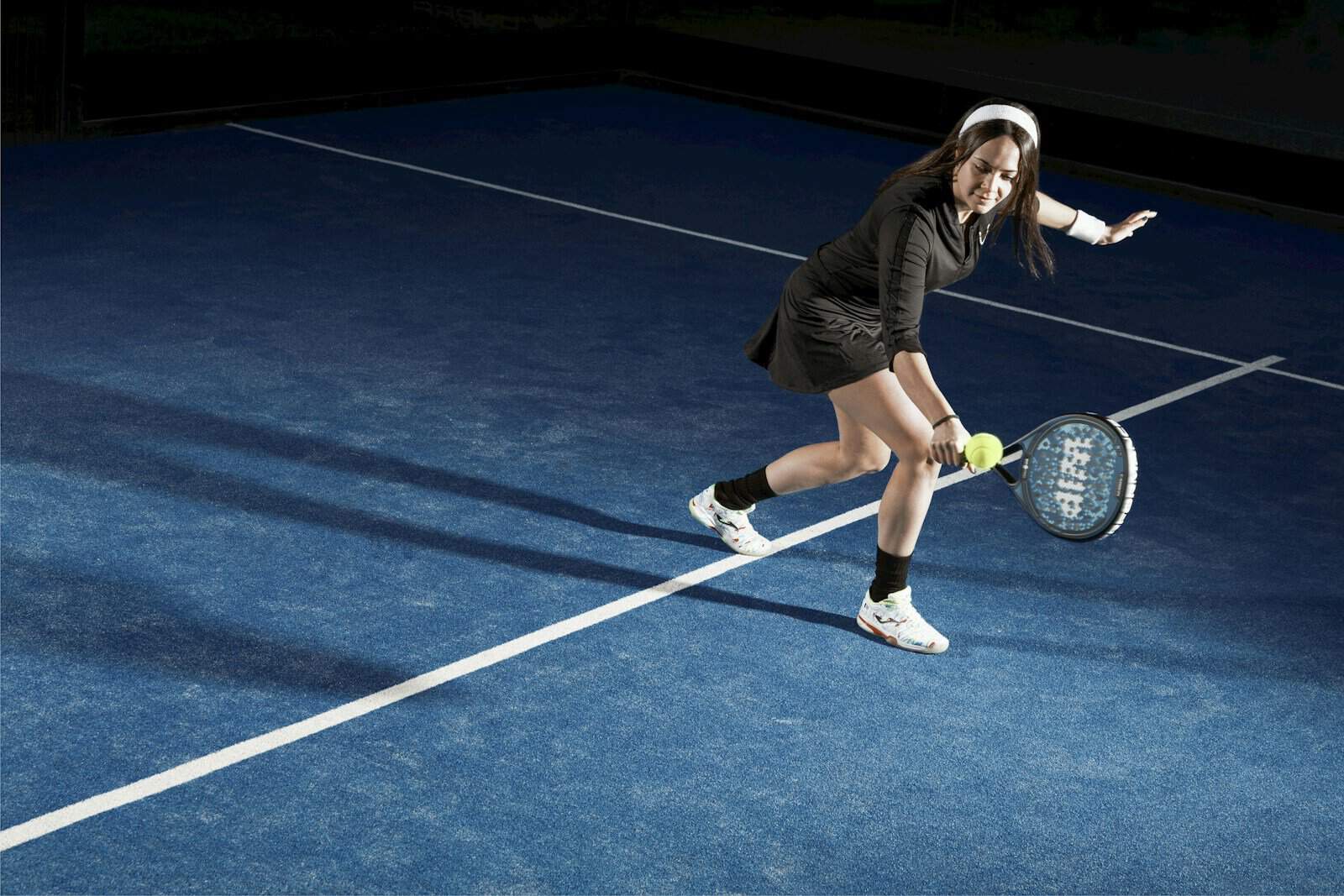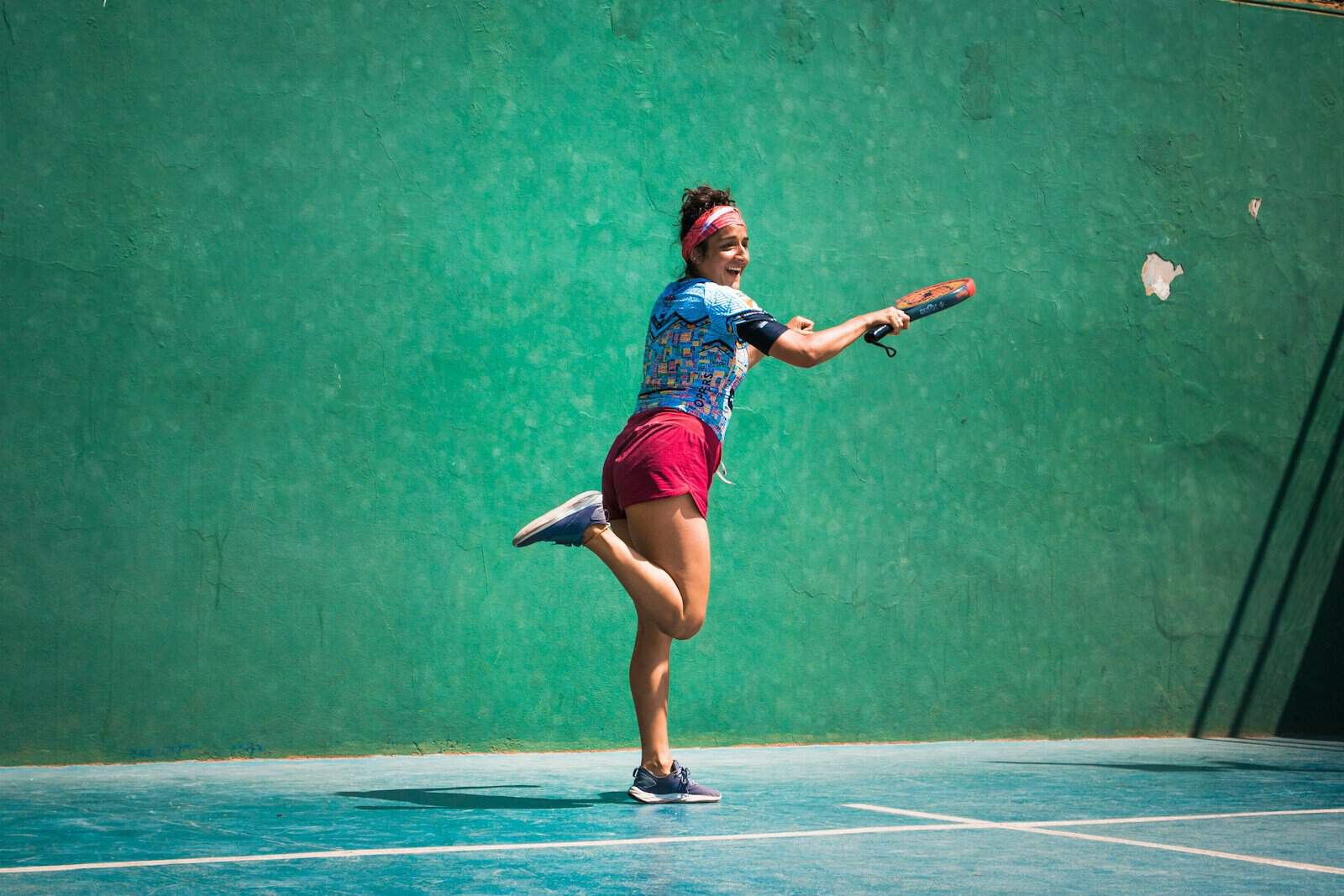Padel is a fast-growing racquet sport that combines elements of tennis and squash. You might have heard of this exciting game that’s taking Europe by storm. Originally from Mexico, padel has become hugely popular in Spain and Argentina.
The rules of padel are similar to tennis, with a few key differences. You play on a smaller court with walls, serveThe Serve is the shot that starts the point in padel. It’s hit underhand, with the ball being stru… More underhand, and always play doubles. These unique features make padel an accessible and social sport for players of all ages and skill levels.
If you’re curious about trying padel, understanding the basics will help you get started. Let’s dive into the key rules that make this sport so enjoyable and addictive for millions of players worldwide.
History and Development
Padel’s journey from a backyard game to a global sport spans several decades. Its unique blend of tennis and squash elements has captivated players worldwide.
Origins of Padel
Padel was born in Mexico in the 1960s. Enrique Corcuera, a Mexican businessman, created the game on his property. He wanted a tennis-like sport that was easier to play and more social.
Corcuera built the first padel court in Acapulco. It had walls, like squash, but used tennis rules. This mix made the game exciting and accessible.
The sport quickly caught on among Corcuera’s friends. It spread to nearby countries, especially Spain and Argentina.
Global Spread
Padel gained popularity in Spain during the 1970s. Alfonso de Hohenlohe, a Spanish prince, brought the game back after visiting Corcuera in Mexico. He built the first two European padel courts at his Marbella Club.
The sport’s growth in Spain was rapid. By the 1980s, padel courts were common in Spanish tennis clubs and holiday resorts.
Argentina embraced padel in the 1980s. It became hugely popular, rivalling football in some areas. The country has produced many top padel players.
In 1991, the International Padel Federation was formed. This helped standardise rules and promote the sport globally. Today, padel is played in over 90 countries, with a strong presence in Europe and South America.
Understanding the Padel Court
The padel court is a unique enclosed space with specific dimensions and features that shape gameplay. You’ll find glass walls, fences, and marked lines that create a dynamic playing environment.
Dimensions and Markings
A padel court measures 10 metres wide by 20 metres long. The court is divided into two equal halves by a netThe Net in padel is the barrier that divides the court into two halves. It’s lower than a tennis n… More in the centre. Each half contains a service line, which is 6.95 metres from the netThe Net in padel is the barrier that divides the court into two halves. It’s lower than a tennis n… More.
The service boxes are formed by the service line and the side walls. You’ll notice a centre service line that splits the service area into two equal parts.
The playing surface is typically made of artificial turf or synthetic materials. This provides good traction and allows for consistent ball bounce.
Materials and Composition
Padel courts are enclosed by a combination of glass walls and metal fencing. The walls are 3 metres high at the ends and 2 metres high along the sides for the first 3 metres.
The glass panels are tempered for safety. They’re designed to withstand the impact of balls and players. The metal fencing completes the enclosure, allowing spectators to watch the game.
The playing surface is often made of composite materials that provide durability and proper ball rebound. Some courts use artificial turf with sand infill for improved player comfort.
Essential Equipment
To play padel, you need specific gear designed for the sport. The right equipment helps you perform better and enjoy the game more.
Rackets and Balls
Padel rackets are unique. They’re smaller than tennis rackets and have no strings. Instead, they have a solid surface with small holes. Most padel rackets are made of carbon fibreCarbon fibres are a material commonly used in the construction of high-quality padel rackets. This … More, fiberglass, or a mix of both.
Carbon fibreCarbon fibres are a material commonly used in the construction of high-quality padel rackets. This … More rackets are light and strong. Fiberglass ones are more flexible and cost less. Some rackets use composite materials for a balance of strength and flex.
Padel balls look like tennis balls but have less pressure inside. This makes them bounce less. The lower pressure helps players control the ball better in the small court.
Player Gear
Wear comfortable clothes that let you move easily. Shorts or skirts with a light shirt work well. Avoid baggy clothes that might catch on your racket.
Good shoes are crucial. Look for court shoes with non-marking soles. They should give you support and let you move quickly in all directions.
Some players wear sweatbands on their wrists. These help keep sweat out of your hands, so you can grip your racket better.
Sunglasses can be helpful if you’re playing outside. They protect your eyes from the sun and help you see the ball clearly.
The Fundamentals of Play
Padel combines elements of tennis and squash, creating a unique and exciting sport. The basic rules and gameplay focus on serving, scoring, and keeping the ball in play using the court walls.
Starting the Game
To begin a padel match, you’ll need to decide who serves first. This is typically done by spinning a racket or tossing a coin. The server stands behind the service line and must hit the ball diagonally across the netThe Net in padel is the barrier that divides the court into two halves. It’s lower than a tennis n… More into the opposite service boxThe Service Box is the area of the court where the serve must land to be considered in play. It’s … More.
The serveThe Serve is the shot that starts the point in padel. It’s hit underhand, with the ball being stru… More is performed underhand, with the ball bouncing once before striking it. If your first serveThe Serve is the shot that starts the point in padel. It’s hit underhand, with the ball being stru… More is a fault, you get a second attempt. After the serveThe Serve is the shot that starts the point in padel. It’s hit underhand, with the ball being stru… More, the ball must bounce once on the receiving side before being returned.
Basic Rules
In padel, you score points similar to tennis. Games use the 15, 30, 40 system, with deuce at 40-40. Win two consecutive points after deuceDeuce in padel is a term used when the score in a game is tied at 40-40. When the game reaches deuce… More to claim the game. Sets are won by the first team to reach six games with a two-game lead.
You can use the walls to play the ball, but it must bounce in the court before hitting a wall. If the ball touches the wall before bouncing in the court, it’s considered out. The ball is also out if it bounces twice on your side or hits the netThe Net in padel is the barrier that divides the court into two halves. It’s lower than a tennis n… More without crossing.
Faults include:
- Failing to clear the netThe Net in padel is the barrier that divides the court into two halves. It’s lower than a tennis n… More
- Hitting the ball out of bounds
- Touching the netThe Net in padel is the barrier that divides the court into two halves. It’s lower than a tennis n… More or opponent’s court during play
- Hitting the ball twice
Scoring and Winning
Padel uses a unique scoring system that combines elements from tennis and other racquet sports. The structure of a match is designed to create exciting and competitive gameplay.
Scoring System
In padel, you score points similarly to tennis. Games are won by the first team to reach four points, but with a twist. Points are counted as 15, 30, 40, and game. If both teams reach 40, it’s called deuceDeuce in padel is a term used when the score in a game is tied at 40-40. When the game reaches deuce… More. From here, you need to win two consecutive points to win the game.
Many padel matches use the golden point rule. This means that at deuceDeuce in padel is a term used when the score in a game is tied at 40-40. When the game reaches deuce… More, the next point decides the game winnerA Winner is a shot that lands in the opponent’s court and is unreturnable, immediately winning the p… More. This adds extra excitement and pressure to each game.
To win a point, you must hit the ball over the netThe Net in padel is the barrier that divides the court into two halves. It’s lower than a tennis n… More and into the opponent’s court. The ball can bounce once on the ground and any number of times on the walls before your opponents hit it back.
Match Structure
A padel match is typically played as the best of three sets. To win a set, you need to win six games with a two-game lead. If the score reaches 6-6, a tiebreak is played.
In a tiebreak, points are scored normally (1, 2, 3, etc.). The first team to reach 7 points with a two-point lead wins the tiebreak and the set. If the tiebreak reaches 6-6, it continues until one team has a two-point lead.
Some tournaments use different formats. For example, some may play best of five sets or use a 10-point tiebreak instead of a third set. Always check the specific rules of your tournament or match before playing.
Advanced Play
Advanced padel players use clever tactics and special shots to win matches. They focus on smart positioning and tricky techniques to outsmart their opponents.
Strategy and Positioning
In padel, good strategy starts with smart positioning. You should always be ready to move quickly. Stand near the netThe Net in padel is the barrier that divides the court into two halves. It’s lower than a tennis n… More in doubles to put pressure on your rivals.
For singles, cover the middle of the court more. This lets you reach shots to either side. Use the back wall to your advantage. When your opponent hits a lob, run back and let the ball bounce off the wall. This gives you more time to set up your shot.
Control is key in rallies. Try to keep the ball low over the netThe Net in padel is the barrier that divides the court into two halves. It’s lower than a tennis n… More. This makes it harder for your opponents to attack. Mix up your shots to keep them guessing. Use spin to make your shots unpredictable.
Specialised Techniques
Volleys are crucial in advanced padel. You’ll often play at the netThe Net in padel is the barrier that divides the court into two halves. It’s lower than a tennis n… More, so practice your volleyA Volley is a shot executed before the ball bounces on the ground, typically played near the net. Vo… More skills. The smash is a powerful shot you should master. Use it when the ball is high to win points quickly.
The underarm serveThe Serve is the shot that starts the point in padel. It’s hit underhand, with the ball being stru… More is unique to padel. You must hit the ball below waist level and let it bounce in your service boxThe Service Box is the area of the court where the serve must land to be considered in play. It’s … More first. Try adding spinSpin refers to the rotation of the ball that affects its trajectory and bounce. In padel, different … More to make your serveThe Serve is the shot that starts the point in padel. It’s hit underhand, with the ball being stru… More harder to returnIn padel, a Return is the shot made after receiving a serve. A strong return can immediately put pre… More.
Drop shots are great for catching opponents off guard. Hit the ball softly just over the netThe Net in padel is the barrier that divides the court into two halves. It’s lower than a tennis n… More. This forces your rivals to run forward quickly.
Practise hitting off the side walls. These shots can wrong-foot your opponents and win you points. Remember, in padel, the walls are your friends.
Rules and Regulations
Padel has clear rules that govern serving and gameplay. These guidelines ensure fair play and help newcomers quickly grasp the sport’s basics.
Serving Rules
In padel, serving is underhand. You must stand behind the service line and hit the ball below waist level. The ball must bounce once in your service boxThe Service Box is the area of the court where the serve must land to be considered in play. It’s … More before going over the netThe Net in padel is the barrier that divides the court into two halves. It’s lower than a tennis n… More.
It should then land in the opposite service boxThe Service Box is the area of the court where the serve must land to be considered in play. It’s … More. If you miss, you get a second chance. Two misses result in a double faultA Double Fault happens when a player fails to execute both of their serve attempts successfully. In … More, and you lose the point.
You can’t touch the service line during the serveThe Serve is the shot that starts the point in padel. It’s hit underhand, with the ball being stru… More. The serveThe Serve is the shot that starts the point in padel. It’s hit underhand, with the ball being stru… More must go diagonally across the court. If it hits the netThe Net in padel is the barrier that divides the court into two halves. It’s lower than a tennis n… More and lands in the correct box, you replay the point.
In-Game Infringements
During play, the ball can hit the walls after bouncing. But it mustn’t touch the wall before crossing the netThe Net in padel is the barrier that divides the court into two halves. It’s lower than a tennis n… More. If it does, it’s a fault.
You can’t hit the ball directly into the opponent’s walls. It must bounce in their court first. Touching the netThe Net in padel is the barrier that divides the court into two halves. It’s lower than a tennis n… More during play is also a fault.
If the ball bounces twice in your court before you hit it, you lose the point. The same applies if you or your racket touches the opponent’s court.
Remember, you can’t reach over the netThe Net in padel is the barrier that divides the court into two halves. It’s lower than a tennis n… More to hit the ball. This would be considered a fault and result in losing the point.
Competitive Play
Competitive padel involves tournaments, rankings, and professional players striving for titles. You’ll find various levels of competition, from local events to international championships.
Tournaments and Championships
Padel tournaments range from small local competitions to grand international events. You’ll encounter different formats, but most follow a knockout system. Matches typically consist of three sets, with the first to win six games taking the set.
Top-tier events include:
- World Padel Tour
- FIP Tour
In these tournaments, you’ll see the best padel players showcasing their skills. They must master the padel serve and perfect their receiving techniques to excel.
Ranking and Titles
Professional padel uses a point-based ranking system. You earn points based on your performance in official tournaments. The more prestigious the event, the more points you can gain.
Key elements of the ranking system:
- Points awarded for each round reached
- Bonus points for winning titles
- Rankings updated regularly
Top players compete for various titles, including:
- World Champion
- European Champion
- National Champion
These titles reflect a player’s skill in padel games and their ability to consistently perform at the highest level. To reach the top, you must excel in all aspects of the game, from serving to scoring in padel.
Recreational and Social Aspects
Padel is a fun and social sport that combines elements of tennis and squash. You’ll find it’s easy to pick up and enjoy with friends.
The game’s smaller court size makes it less physically demanding than tennis. This means you can play for longer without getting tired.
Padel is great for your fitness. It improves your agility, coordination, and cardiovascular health. You’ll burn calories while having a good time.
The scoring system is the same as tennis, making it familiar for many players. This helps you focus on the unique aspects of padel without worrying about complex rules.
Padel is typically played as doubles. This format encourages socialising and teamwork. You’ll chat with your partner between points and strategise together.
The enclosed court creates a lively atmosphere. You can bounce the ball off the walls, leading to exciting rallies and unexpected shots.
Many padel clubs offer social events and tournaments. These are brilliant opportunities to meet new people who share your interest in the sport.
Padel is suitable for all ages and skill levels. You can enjoy casual games with family or competitive matches with friends. It’s a versatile sport that adapts to your preferences.




